Join More Than 50,000+ Subscribers and get latest camera news and rumors
NEW CAMERA VIDEOS ON YOUTUBE
|
By admin, on February 5th, 2025
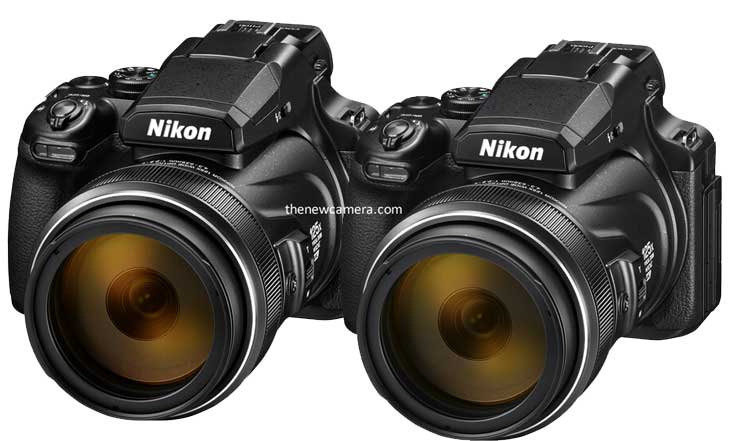 Identical twins – Body design, and button layout remain the same, the only change in the camera name is noticeable Now we have created a different table where we have sorted out the major differences between the two. The thing that disappoints us, number one, is that there is no major upgrade we can find in the hardware zone of the camera. The sensor, the image processor, the lens, and even the battery—everything remains as it was in the predecessor of the camera. And the thing that disappointed us more is the drop in image stabilization support. Now, the P1100 camera got an IBIS rating of 4.0 stops only, whereas the Nikon P1000 camera had an image stabilization rating of 5.0 stops from CIPA.
Pre order – Buy Nikon P1100 at Adorama.com – B&H Store
Differences Between Nikon P1100 and Nikon P1000
| Feature |
Nikon P1100 |
Nikon P1000 |
| IBIS Rating CIPA |
4.0 Stops |
5.0 Stops |
| IP Streaming |
No |
Yes |
| Power/Data I/O |
USB-C input (modern standard) |
Micro-USB input + extra Micro-USB data port |
Some more differences between the two model
| The flash’s guide number drops from 16 to 12m in the new Nikon P1100 |
| New Fireworks Show Scene Mode and Long Exposure NR. |
| Connectivity Features Improved – WPA3-SAE Wi-Fi for greater security and Bluetooth 5.1 |
Verdict:
The Nikon P1100 camera announced, does carry some necessary updates— most notably, the addition of a USB-C port, which is now mandatory for all electronic devices in the European Union. Other than that, the camera does have some minor upgrades, so if someone already has a P1000 camera, there is no need to spend extra money on this one, as the overall core specifications remain the same as those of the P1000.
Those who are looking for a mega zoom camera can buy it, since the P1000 has now been discontinued by Nikon, making the P1100 the only remaining super mega zoom model in the market.
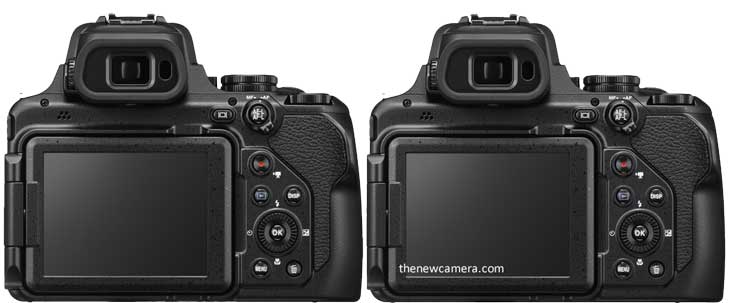
Common Features Between Nikon P1100 and Nikon P1000
| Feature |
Both Cameras |
| Sensor |
16MP 1/2.3″ CMOS sensor |
| Lens/Zoom |
125x optical zoom (24–3000mm equivalent) |
| Image Stabilization |
Optical stabilization |
| ISO Range |
100–6400 |
| Shutter Speed |
1/4000–30 sec (manual mode) |
| Viewfinder/Display |
2.36M-dot EVF + 3.2″ 921k-dot articulating LCD |
| Continuous Shooting |
7 fps (7-frame JPEG buffer) |
| Battery Life |
~250 shots (EN-EL20a) |
| Weight/Dimensions |
Identical: 3.11 lb / 1415 g, 5.8 x 4.7 x 7.1″ |
The cameras are nearly identical in core specs, sharing the same sensor, zoom range, stabilization, and ergonomics.
By admin, on February 5th, 2025
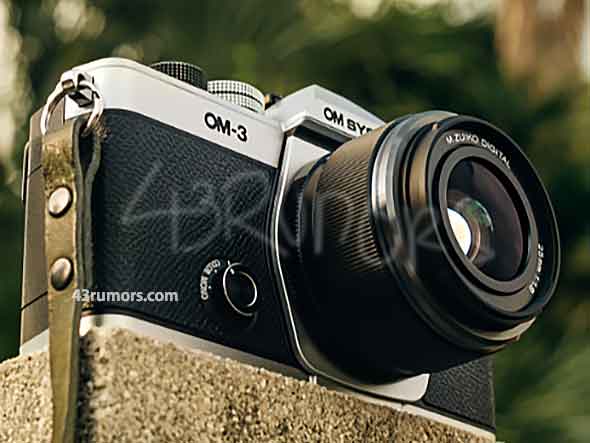
Olympus OM3 camera announcements will happen on Feb 6, 2025. We now have the core specification of the camera as well as leaked images of the upcoming camera also available
New Olympus OM-3 camera
– Same 20MP sensor
– Metal body
– Price around $1500
– Rumored to be officially announced at CP+ in February 2025
– Various color profiles for video, similar to Fujifilm’s simulations
– Based on the OM-1
Olympus OM3 camera B&H Store | Adorama.com | Amazon.com
Stay tuned we will update you soon, with comparison and sample images once the camera gets officially announced.
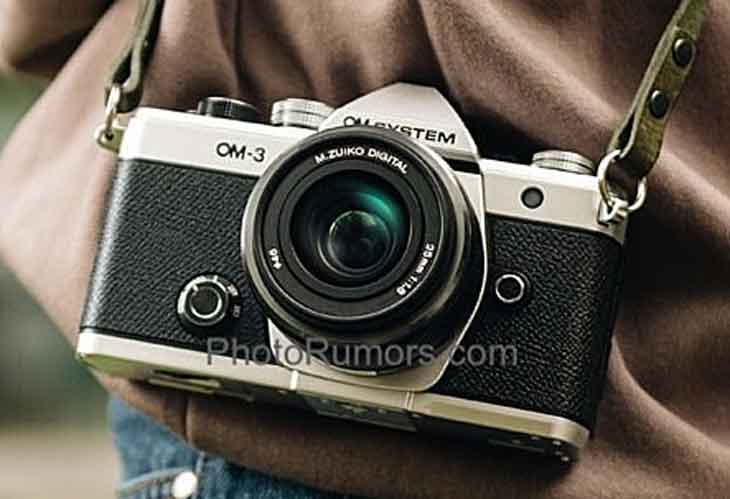
imagecredit: 43rumors.com | Photorumors.com
By admin, on January 31st, 2025
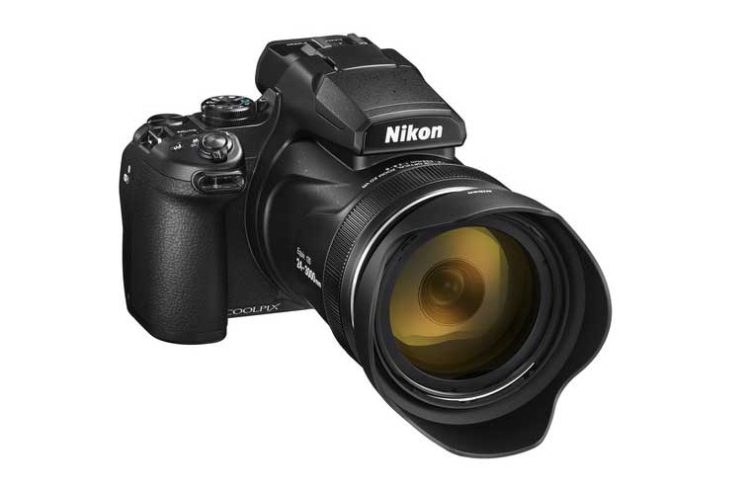
Recent reports suggest the demand for the Nikon P1000 camera has gained huge momentum. The camera is now selling for more than its recommended MSRP retail price range (approximately 2X price), and this is very clearly visible in online stores all around the world.
The demand for compact cameras has returned to the market, and most influencers right now are willing to buy a high-quality compact camera. However, the supply of compact cameras is very low, and at the same time, there is only one super high-zoom camera available: the Nikon P1000.
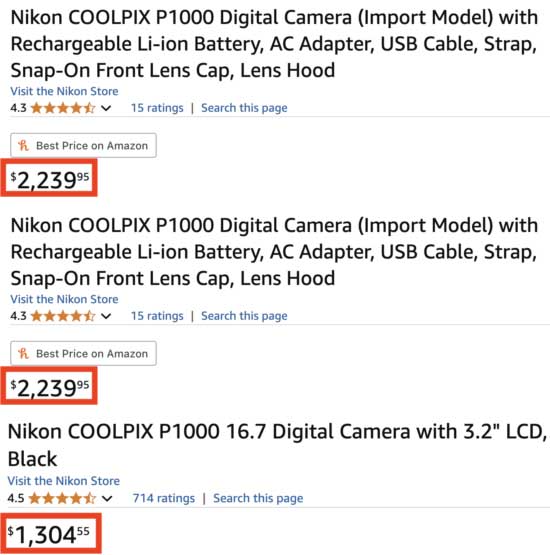
As we have already said, the recent report shows that the price of the P1000 is skyrocketing globally. Now let’s dive into the details and explore the possibilities, starting with the name of the camera.
Nikon P1100 or P2000: What’s Next from Nikon?
First of all, the scarcity of the Nikon P1000 camera and the high price tag clearly indicate a very high demand for a new model. Another big hint is that most of the P1000 stock has been sold out. It looks like the company is clearing up the previous stock in order to announce the new camera.
What will be the name of the upcoming Nikon mega-zoom camera? Based on leaks and speculations, the name is not very clear. If they move in chronological order, the name of the upcoming camera will likely be Nikon P1000, which would be the successor to the P1000. Earlier, the P1000 was the successor to the P900 camera, so this is how they are moving in chronological order in their mega-zoom series. However, if they take a bold leap with a major upgrade in the core specifications of the camera, or if some groundbreaking features like AI autofocus, a larger image sensor, and better optics are introduced, it may lead to a major leap in the name too, like Nikon P2000. Chinese sources are specifically speculating that the camera name will be the Nikon P2000 and not the P1100.
Rumored Specifications of the P1000 Successor:
- 150x high-quality optical zoom lens, with digital zoom up to 200x. – As per the initial rumors, the camera is set to have a 3500mm zoom lens. Earlier, the P1000 model had a 3000mm zoom lens, which was equivalent to 125x optical zoom.
- The new lens will have an aperture of f/2.8 ultra-wide aperture, which will improve the overall low-light performance of the camera and will also help ensure more artistic depth of field in the shots.
- The NEW 1/1.8-inch CMOS sensor (larger than the P1000’s 1/2.3-inch sensor) aims to boost dynamic range, reduce noise, and enhance image quality
- New AI Auotofous: Similar to what we have seen in Nikon Z50 II, Z6 III, Z8, and Z9.
- 4k 60FPS Video and continuous, refined autofocus and color grading tools for enhanced video production
Nikon P2000 camera can easily dominate the bridge camera market with its unmatched zoom and new AI modes. The best thing is that literally no competitor is present in the bridge camera market to compete against the Nikon P2000 camera.
The camera is targeted towards bird lovers, travel photographers, and even professionals who want to have a secondary body and an alternative to heavy and bulky DSLR setups. At the same time, a huge market demand has emerged from content creators who love to have tax-saver products and higher-zoom cameras that produce better image quality than their smartphones.
Nikon should announce the P1000 camera as soon as possible. The fan base is eagerly waiting for Nikon’s next move. Stay tuned—we will update you as soon as we get any new information related to the company’s upcoming cameras and lenses.
Follow us on our social pages FACEBOOK | TWITTER | INSTAGRAM to get live news + Nikon Rumors 24X7
source webio and NR.com
By admin, on January 29th, 2025
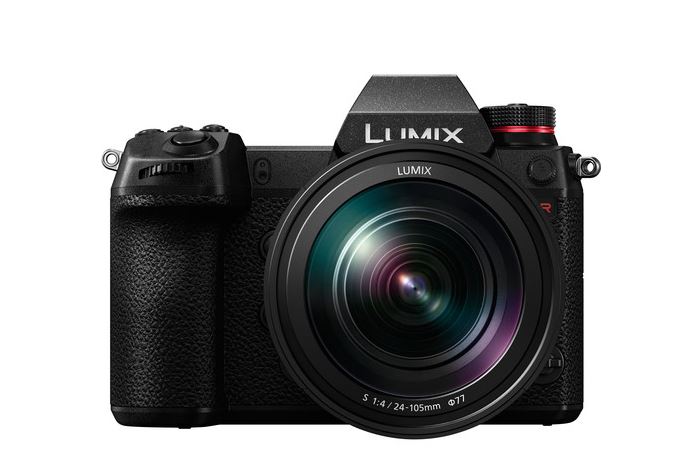
According to the latest rumors surfaced from reputed rumor mills, the Panasonic S1R Mark II camera announcement date is now confirmed, and it is said to arrive in February 2025. Take look at the set of updated specification of the upcoming camera
Panasonic S1R Mark II Core Specification [Updated specs]
-
- 44MP – Full frame CMOS Sensor
- No Optical low-pass (anti-aliasing) filter
- ISO 80 – 51200( expands to 40 – 102400)
- 5-axis Sensor-shift Image Stabilization
- 3.00″ Fully Articulated Screen
- 5760k dot Electronic viewfinder
- 9.0fps (40.0fps Electronic) continuous shooting
- 8K at 30fps , 4K at 60fps and FHD at 60fps Video Recording
- 10-bit 4:2:2 Color Sampling
- Built-in Wireless
- 800g. 134 x 102 x 92 mm
- Weather-sealed Body
Collaboration – Panasonic X Capture One – Panasonic has just collaborated to announce the S1R Mark 2 camera with Capture One. Capture One is industry-leading RAW editing software, so they have collaborated to bring out the maximum from the upcoming S1R Mark 2 camera.
One more Camera announcement is Due on April 2025
There is one more that Panasonic will be announcing a new camera in April 2025. The source of the rumor mill suggests is a very unique camera, although, after the Panasonic S1R Mark II update, we are waiting for the Panasonic S1H Mark II camera. Stay tuned, more updates coming.
We will publish more details very soon as we get any new updates.
Follow us on our social pages FACEBOOK | TWITTER | INSTAGRAM, to get LIVE News and Panasonic Rumor
source SAR YT
By admin, on January 27th, 2025
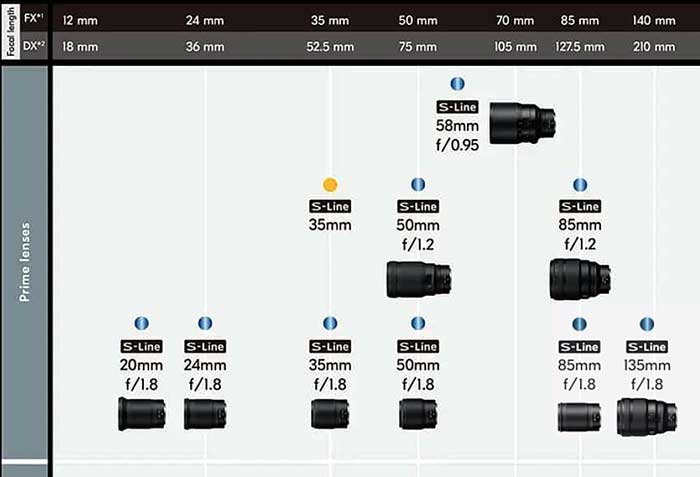
According to the latest rumors, the surface of the wave Nikon is about to announce the Z 35 mm f/1.2 lens before CP Plus, so in February. CP Plus will start on February 27 to March 2, 2025, at PACIFICO Yokohama in Yokohama, Japan, so the lens announcement is expected before that. Camera makers such as Canon, Nikon, Sony, Fujifilm, Sigma, and Panasonic, among others, will take part in that show.
We have already seen a 35 mm lens in a Nikon roadmap, and the 35 mm f/1.8 and the 35mm F1.4 [buy from Adorama] lens is already in the Nikon Z lineup. The 35 mm f/1.2 were the only missing link. So now, it is almost confirmed that the lens will be coming very soon.
On the other end, we have received information that the Nikon DX-format camera is expected to arrive at the end of 2025. We will bring more updates about that in our upcoming articles.
Nikon Upcoming Camera 2025
Follow us on our social pages FACEBOOK | TWITTER | INSTAGRAM to get live news + Nikon Rumors 24X7
source SAR YT
By admin, on January 27th, 2025
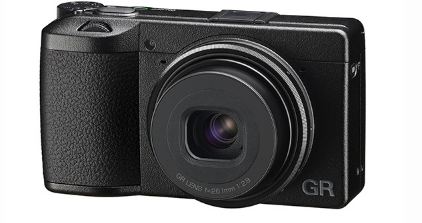
According to the latest rumors surfaced online, the Ricoh GR4 is likely to be announced sometime in late 2025. The information is coming out from webio [federation of independent photographers] As per the rumors, the camera will have massive improvements in the out-of-box system as well as in battery life.
Same kinds of rumors surfaced back in 2024. At that time, Ricoh sources confirmed that these rumors were false, and they were not planning to announce the GR4 camera in late 2024 or the first quarter of 2025.
When asked why there were rumors of the release of the Ricoh GR4? The source responded: The Ricoh GR series cameras are highly praised by users and the market feedback is hot. It is not surprising that there have been many rumors about the release of the GR4 last year and this year. It is too early to talk about the specific release date of the Ricoh GR4 camera. The existing GR3 and GR3x series models are still in short supply.
The Ricoh GR3 was announced back in 2019 and the GR2 was announced back in 2015, even if we talk about scheduled announcement timelines, the GR4 is overdue for an update. But at the very same time, Ricoh is not that serious about the camera. However, we do hope and expect that they will bring an update in the year.
Ricoh was once working on action cameras back in 2019 – check here
Get LIVE RUMORS –> FACEBOOK | TWITTER | INSTAGRAM to to get live news + Ricoh rumors 24X7
By admin, on January 25th, 2025
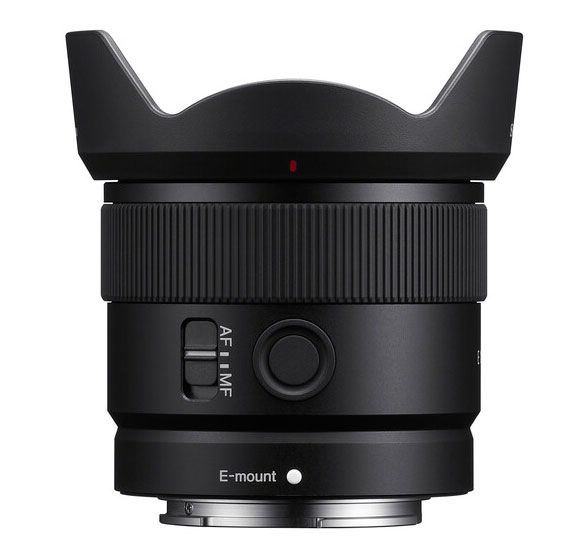 Image of Sony 11mm APS-C Lens image file As we have discussed earlier, Sony is releasing two new lenses and two new cameras. Let’s first discuss these two lenses. Then, we will discuss the cameras we have already discussed in the previous post.
Sony FE 16mm F1.8
The first is the vlogging-friendly 16 mm f/1.8 lens. This particular lens is a budget f/1.8 lens developed for full-frame sensor-based cameras. We already weigh the VILTROX 16 mm f/1.8 lens. That being said, the upcoming Sony lens is more compact and looks very similar to their APS-C line of compact lenses, like maybe the 11 mm f/1.8. The next thing Sony is working on is a budget telephoto zoom lens for wildlife and landscape photographers.
Sony FE 400–800 mm f/6.3–8.0 lens
We already have Sony’s 200–600 mm lens, and this will be an extended edition in the same series, where you can reach from 400 to 800 mm. This new lens will undoubtedly become more popular over time due to its reach. Wildlife photographers and bird shooters love to have a lens beyond 600 mm to capture details more closely, and if a lens option like 400–800 mm is available, anyone would surely pick this lens instead of getting a 200–600 mm.
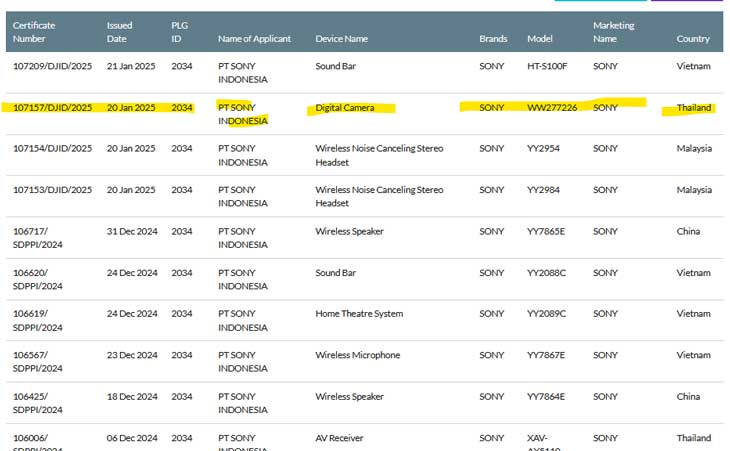
Sony Upcoming Camera Model Codes 2025
1. WW 773396 – Sony A7 V [Registered on December 5th, 2024]
2. WW277226 – Model Name Unknown [Registered on January 21st, 2025]
Stay tuned more updates coming
Follow us on our social pages FACEBOOK | TWITTER | INSTAGRAM, If you have time –>see more Sony Alpha Rumor
source – SAR.com
|
KEEP THIS BLOG ALIVE - Support New Camera Buy Canon Lenses, Buy Music CD or Digital Camera at amazon it helps this site, and you do not pay anything extra, it is just a way to help support this site.

|
















